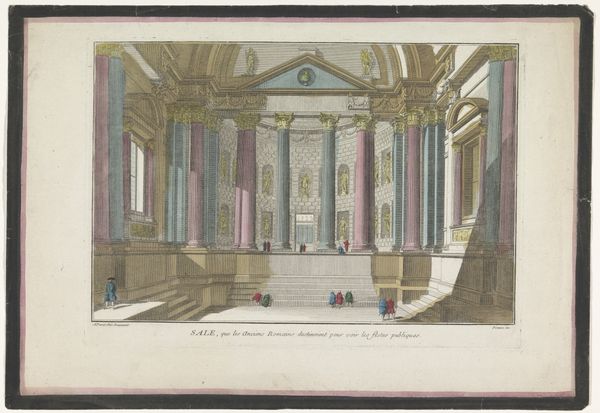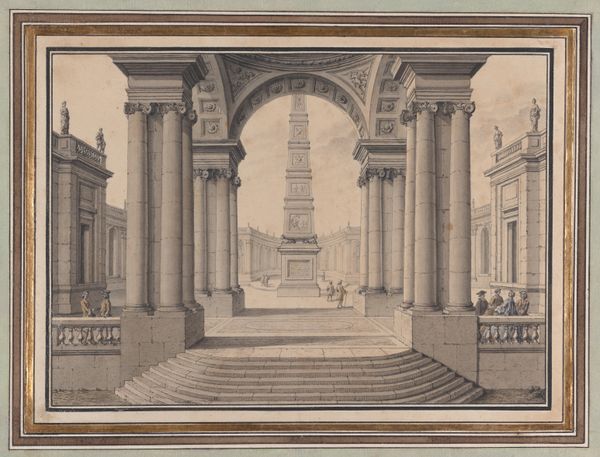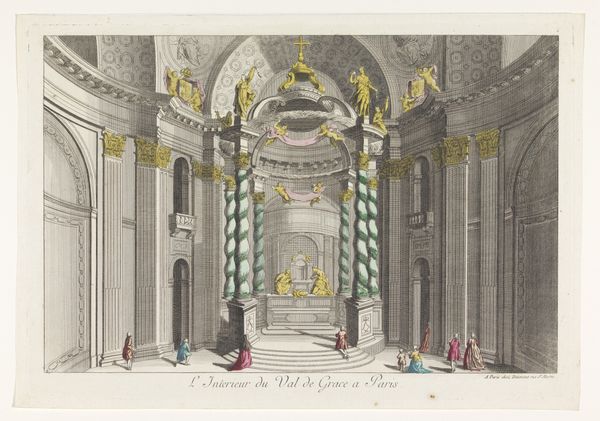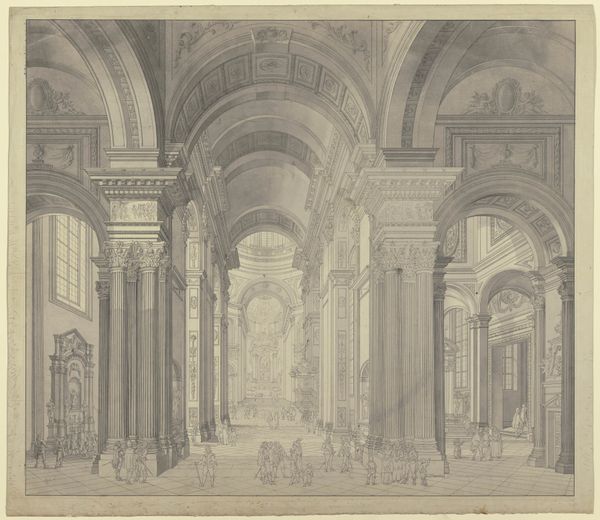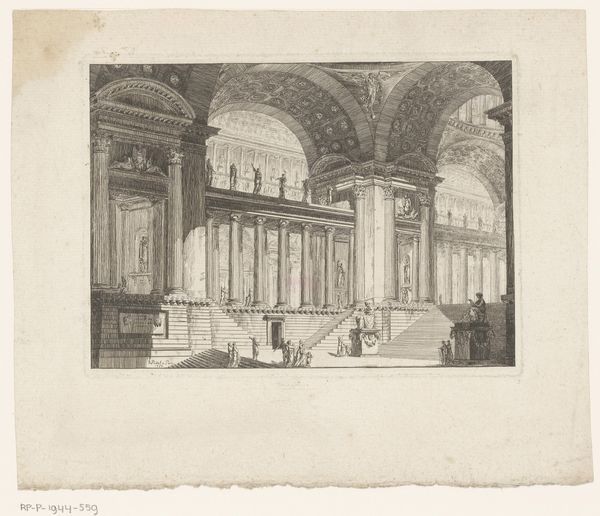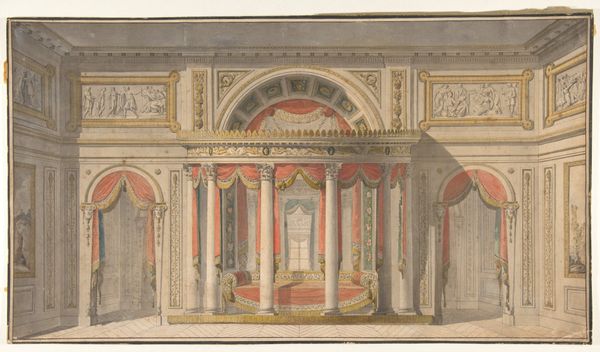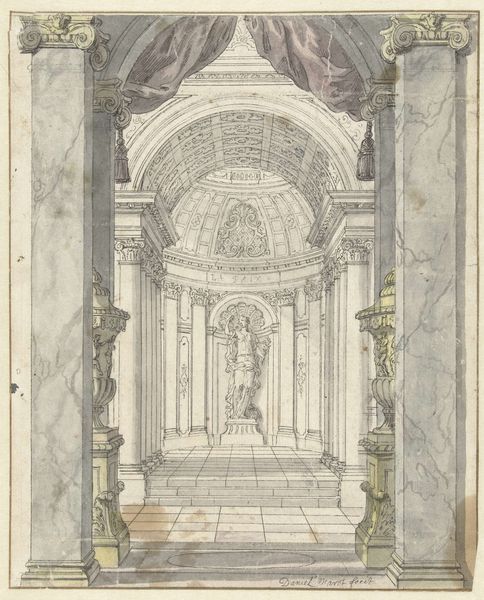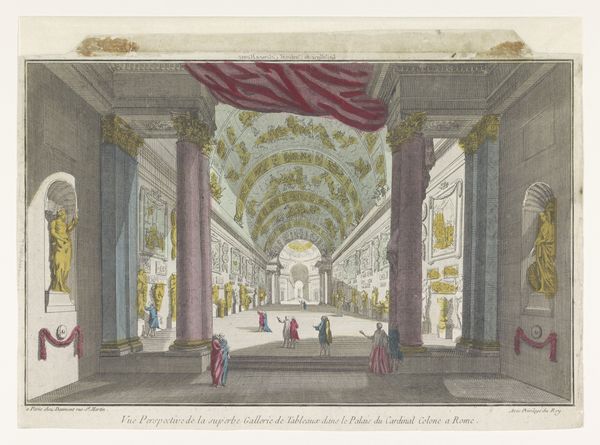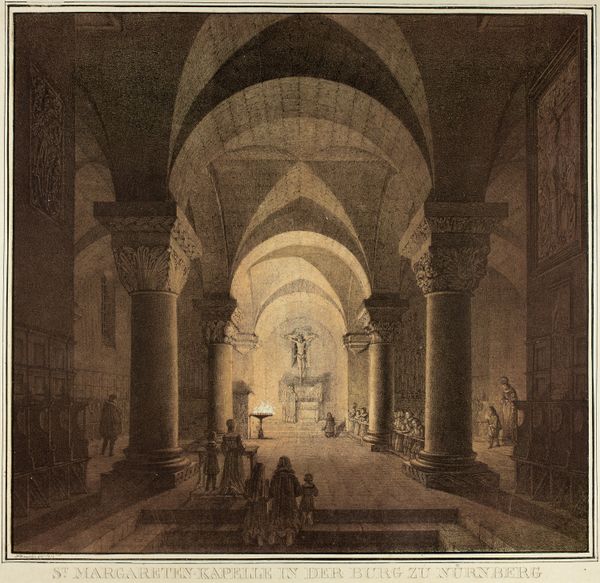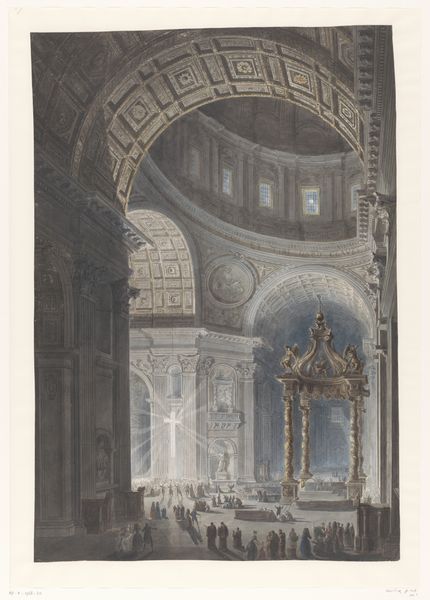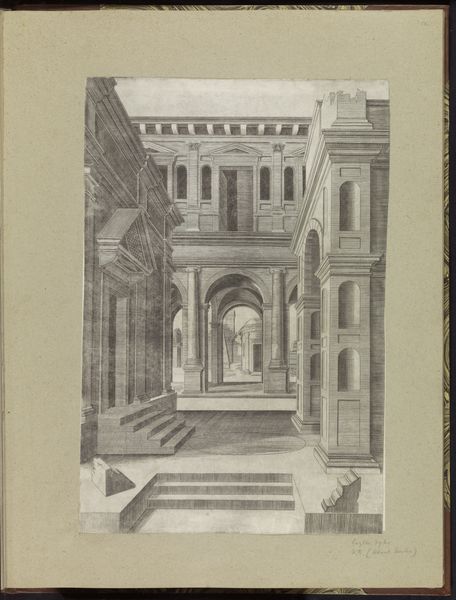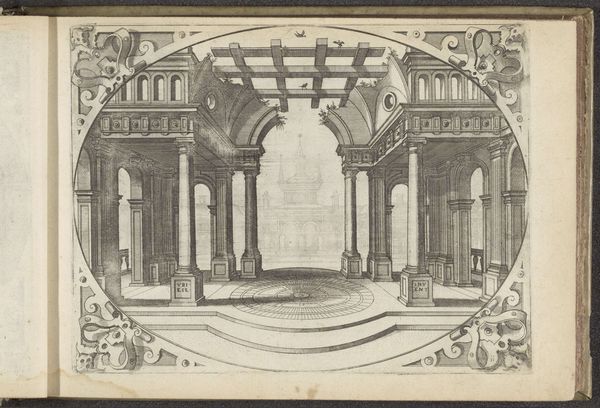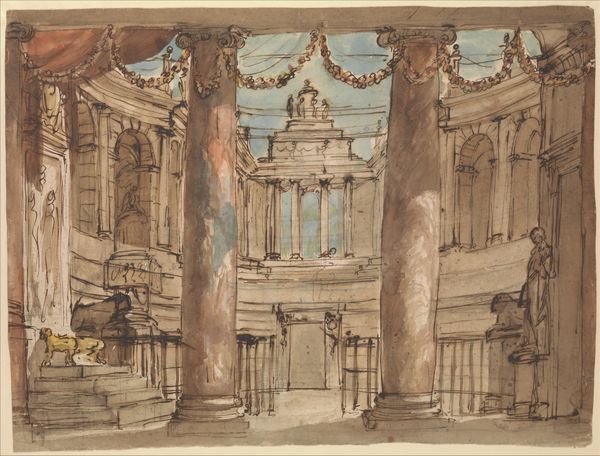
drawing, watercolor, architecture
#
drawing
#
neoclacissism
#
landscape
#
watercolor
#
mixed media
#
watercolor
#
architecture
Dimensions: height 292 mm, width 440 mm
Copyright: Rijks Museum: Open Domain
Curator: Ah, "Gezicht op het interieur van een Romeins bouwwerk" – roughly translated, a view of the interior of a Roman building – dating from 1745 to 1775. It’s a drawing, actually a mix of watercolor and ink, by Jean-François Daumont. What's your first take on this one? Editor: Monumental melancholy. It feels less like a celebration of Roman architecture and more like a wistful echo, doesn't it? The cool colors emphasize that emptiness, despite the little figures milling about. Curator: I think you’re onto something. Neoclassicism, sure, the architecture speaks to that ideal. But Daumont captures a specific perspective; those figures down there really emphasize the overwhelming scale, creating a kind of theatrical, yet lonely, grandeur. Editor: Absolutely. The Roman arches and columns, icons of power and permanence, are here almost… delicate. I am curious about those figures that stand among the religious symbolisim, are they spectators or partecipants? Curator: I see them as framing the space, giving us a more precise perspective on scale but, look at those faint, yet defined vertical lines over the structure – it's like the artist made a conscious decision to highlight that aspect through repetitive mark-making and precise depiction, offering the image of decline that resonates so strongly even today. Editor: True. There is also a sense of detachment as, instead of emphasizing the beauty of roman heritage, Daumont chose to render that heritage’s inner state: abandonment. This makes the image haunting, something I am not used to associate to Neoclassicism at all. Curator: It invites reflection on what remains versus what's been lost. Or what we *think* remains! In the end, these historical depictions become imaginative acts, stories layered onto stone and pigment, and even architecture. Editor: Well said. I keep wondering about those small figures now...they feel like lingering guests, lost within that silent conversation with Rome's former power. A poignant reflection on our place within history, I suppose.
Comments
No comments
Be the first to comment and join the conversation on the ultimate creative platform.
